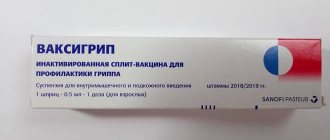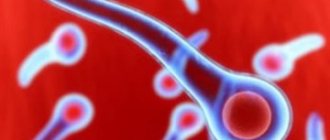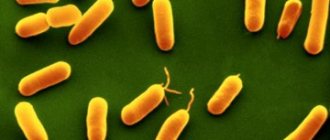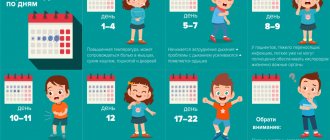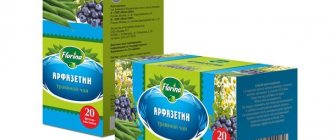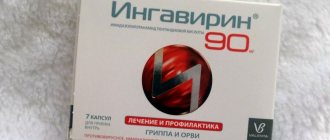Everyone knows about vaccination against tetanus, diphtheria, measles, whooping cough and polio. A less well-known vaccine against hemophilus influenzae is Hiberix. This disease is not well known, so some parents ignore it, considering it unnecessary. But it is included in the national vaccination calendar, as it protects against a disease that causes serious complications. Let's take a closer look at this disease and the vaccine against it: who is it indicated for, how long does the protection last, and what contraindications and reactions may there be?
Release form and composition
Hiberix is available in the form of a lyophilisate for the preparation of a solution for subcutaneous and intramuscular administration. The composition of 1 package of the drug includes:
- the vaccine is in the form of a white powder or dense mass. The vaccine is packaged in 1 dose bottles made of neutral glass (Eur. F.) with a rubber stopper and an aluminum cap;
- solvent in the form of a transparent, colorless liquid without visible mechanical inclusions. The solvent is packaged in 0.5 ml bottles, syringes and ampoules made of neutral glass (Eur. F.). The bottles are equipped with a rubber stopper and an aluminum cap, the syringes are equipped with a rubber stopper.
The drug is packaged in blisters (1 bottle with the vaccine + 1 syringe with 1 or 2 needles, a bottle or ampoule with a solvent in a blister) and packed in cardboard packs (1 blister per pack).
The composition of 1 dose of vaccine 0.5 ml includes:
- active ingredient: capsular polysaccharide of Haemophilus influenzae type b (as part of the conjugate) – 12.50 mcg;
- excipient: lactose;
- solvent: sodium chloride, water for injection.
Hiberix is a vaccine that protects against
Haemophilus influenzae is a bacterium that is very common in the environment. Transmitted by airborne droplets. You can become infected simply by communicating with a sick or infected person - an adult or a child. It causes diseases such as pneumonia, meningitis, arthritis. When infected, purulent processes occur, including sepsis.
Babies need vaccination starting from two or three months, because it is at this time that the antibodies coming from mother’s milk are already supplied in insufficient quantities to fight the infection. A completed vaccination cycle allows for the formation of specific immunity that will protect a child up to five years of age.
The drug Hiberix contains only type b antigens of Haemophilus influenzae, so it will not be able to provide immunity to the same diseases, but caused by other infections. For example, protection against meningococcus will not develop, and vaccination will not protect against serous meningitis caused by it.
The drug Hiberix is produced by the British pharmaceutical company GlaxoSmithKline.
Contraindications
It is prohibited to use the vaccine if you have an allergic reaction to any of the ingredients of the drug, as well as if you have a history of similar reactions to previous administration of the vaccine to prevent infection caused by Haemophilus influenzae type b.
Acute non-infectious and infectious diseases, as well as the exacerbation phase of chronic diseases are regarded as temporary contraindications for vaccinations. Scheduled vaccinations are carried out during the period of convalescence/remission or after recovery (after 2-4 weeks). For acute intestinal diseases, mild ARVI and other diseases, vaccination is done immediately after the temperature normalizes.
Reviews
Users leave rather contradictory comments about vaccination with Hiberix. Some complain of a difficult time getting vaccinated and complications after it, while others have not experienced any problems with it. However, in both cases, the effectiveness of the drug remains at a high level, the immunity of children increases and protection not only appears against hemophilus influenzae infection, but also, for example, the number of ARVI diseases, which are often infected at a young age, is reduced. One of the disadvantages is also sometimes noted that you have to pay for the vaccine, but many also write about the availability of free funds in clinics.
The Hiberix vaccine is a means of developing immunity against Haemophilus influenzae infection. It is administered mainly in childhood, since after 5 years, the body’s protective properties are independently able to avoid contracting this infection. In Russia, it has not been used for very long, so many parents doubt whether there will be complications after it. But the effectiveness of the vaccine has already been proven; in most cases it is well tolerated and does not cause dangerous reactions. If side effects do appear, they disappear after a maximum of a couple of days.
Directions for use and dosage
A single dose of the vaccine is 0.5 ml. The site of vaccination when vaccinating children of the first year of life is the upper outer surface of the middle part of the thigh, for other ages - the deltoid muscle.
When vaccinating patients with blood coagulation disorders (in particular, thrombocytopenia), subcutaneous administration of the drug is recommended.
Vaccination schedules
For children aged 3–6 months, the course of primary vaccination includes 3 doses of the vaccine: at 3-4, 5-6 months and revaccination at 18 months. It is recommended that vaccination be carried out simultaneously with vaccination against diphtheria, whooping cough, polio and tetanus.
If vaccination against infection caused by Haemophilus influenzae type b is started later than 3 months, but before 6 months of the child’s life, then the primary course of immunization includes 3 vaccinations (the interval between them is 1.5 months). When revaccination in this case, 1 dose is administered in the second year of life.
For previously unvaccinated children aged 6–12 months, the course of primary vaccination includes 2 vaccinations with an interval of 1 month and a single revaccination in the second year of life.
For children aged 1–5 years, the vaccine is administered once.
Preparation and administration of the solution
To prepare the solution, add the supplied solvent to the vaccine vial (0.5 ml of solvent per dose), shake well until the contents are completely dissolved.
The finished vaccine should be a colorless transparent liquid. If the appearance of the resulting solution changes and (or) if mechanical inclusions are detected in it, the vaccine must be destroyed. After reconstitution, the vaccine must be completely drawn back into the syringe, then the needle must be changed and the vaccine administered immediately.
To prevent contamination of the contents, it is necessary to remove the vaccine only with strict adherence to aseptic rules.
It is allowed to administer Hiberix in one syringe with the Infanrix vaccine (a three-component adsorbed liquid vaccine for the prevention of tetanus, diphtheria, whooping cough). In this case, instead of a solvent for reconstitution, the Infanrix vaccine is used in the form of a suspension for intramuscular administration. To restore Hiberix, you need to use 0.5 ml of Infanrix (the entire contents of the syringe). The resulting solution is administered in accordance with the instructions for use of the Infanrix vaccine.
Alternative drugs
There is only one analogue - this is a French vaccine called Act-HIB. Both drugs are completely interchangeable: if a child has been vaccinated with Hiberix, he can get the next vaccination with Act-HIB, and vice versa.
There are also imported multicomponent vaccines , which also include substances against Hib infection:
- Infanrix Hexa, Belgium: includes components against polio, diphtheria, hepatitis, whooping cough, tetanus and Haemophilus influenzae.
- Hexaxim , France: analogue of Infanrix Hex.
- Pentaxim, France: against whooping cough, tetanus, polio, diphtheria and Hib infection.
These vaccines are of high quality and can be used for immediate administration of the necessary vaccines. The reaction to them is usually less severe, since they contain a purified anti-whooping cough component. In the domestic DTP vaccine it is whole cell, and it is in this form that it gives a pronounced reaction. However, all vaccinations are effective and contribute to the development of the necessary immune protection. The difference will also be the price: foreign-made complex drugs have a high cost, while DPT and Hiberix can be made according to the national schedule for free.
Side effects
Clinical studies have provided evidence of the following side effects that may develop within 48 hours after vaccination:
- reactions at the injection site: slight redness that disappears on its own, pain and slight swelling at the injection site;
- general reactions: loss of appetite, anxiety, vomiting, diarrhea, fever, unusual crying (symptoms are mild and go away on their own).
The described general reactions were also observed with the joint administration of Hiberix and other vaccines.
According to post-registration surveillance data, the following adverse events may very rarely be observed when using the vaccine:
- immune system: allergic reactions (including anaphylactoid and anaphylactic), angioedema;
- respiratory system: apnea;
- nervous system: convulsions (with or without fever), hypotensive-hyporesponsive episode, drowsiness, vasovagal reaction to injection, fainting;
- skin: rash, urticaria;
- reactions at the injection site: compaction, widespread swelling of the limb.
Preparing for the vaccine and behavior after the procedure
Preparation for the administration of Hiberix, like any other vaccine, includes an examination by a pediatrician immediately before the procedure to rule out any infectious diseases. It is advisable to take a general urine and blood test a couple of days before immunization to rule out hidden infections. No other specific preparation is required.
After the procedure, you should stay for half an hour under the supervision of medical professionals, so that if an unexpected reaction (allergies) occurs, help can be provided immediately. Otherwise, no special measures are required, except that it is advisable to limit physical activity after the procedure and get plenty of rest.
special instructions
It is strictly prohibited to administer Hiberix intravenously.
In very rare cases, vaccination can lead to the development of an anaphylactic reaction, so treatment rooms should be provided with anti-shock therapy, and patients should be under medical supervision for 30 minutes after vaccination.
When Hiberix is administered, a slight immune response to tetanus toxoid may occur, but the vaccine is not a complete replacement for tetanus vaccination.
Individuals who have received Hiberix experience excretion of capsular polysaccharide in the urine, therefore, within 1-2 weeks after vaccination, if an infection caused by Haemophilus influenzae type b is suspected, determination of the antigen in the urine has no diagnostic value.
Using the vaccine increases the risk of developing sleep apnea. During primary vaccination of children born prematurely (before the 28th week of gestation), especially children with respiratory distress syndrome, it is necessary to ensure monitoring of respiratory function for 72 hours. This group needs vaccination, so you should not refuse it or delay primary vaccination. After the initial vaccination course, such children must remain under the supervision of a doctor in a hospital setting for 72 hours.
The presence of HIV infection in a patient is not a contraindication to the use of the vaccine. Hiberix does not protect against diseases caused by other types of Haemophilus influenzae, nor does it prevent bacterial infections caused by microorganisms other than Haemophilus influenzae type b.
Hemophilia is a dangerous disease
Although not as widely known, hemophilia is a disease that can cause severe bacterial complications:
- pneumonia (pneumonia);
- sepsis (general blood infection by pathogenic microbes);
- meningitis (severe inflammation of the meninges);
- epiglottitis (inflammation of the epiglottis);
- arthritis (inflammatory processes in the joints).
The hemophilus influenzae that causes this disease is transmitted by airborne droplets. It is especially dangerous for children under 5 years of age: they can become infected with it from an asymptomatic carrier, and it is very difficult to bear. Some complications can lead to severe conditions, including death. This is why Hiberix is no less important than other vaccinations. It provides strong immune protection, which protects the child from hemophilia for about 4 years. This immunity will protect the baby until he is 5-6 years old, and then the body will be strong enough to cope with the infectious agent on its own.
Taktivin
Instructions for use:
Prices in online pharmacies:
Taktivin is an immunostimulating agent.
Dosage form - solution for subcutaneous administration: colorless, transparent, odorless [1 ml in ampoules, 5 or 10 ampoules in a cardboard pack with a separating snake or 5 ampoules in contour cell packs, 1 or 2 packs in a cardboard pack (if When using ampoules without a break point or break ring, an ampoule scarifier is inserted into the pack)].
Release form and composition
The dosage form of Taktivin is a solution for subcutaneous administration: transparent, colorless, odorless (in ampoules of 1 ml, 5 or 10 ampoules complete with an ampoule knife, 1 set in a cardboard pack).
Active ingredient – taktivin (bovine thymus gland extract): 1 ml – 100 mcg.
Auxiliary components: sodium chloride and water for injection.
Auxiliary components: sodium chloride and water for injection.
Pharmacological group
The medication belongs to the category of immunostimulants. The active component of the drug is t-activin. The pharmacological drug has a polypeptide base, and the active substance is obtained by isolation from the thymus gland of cattle.
In the case of immunodeficiency states, the pharmacological agent has a positive effect not only on the numerical, but also on the functional values of the immune T-system. Due to the effect of the drug, the relationship between 2 groups of lymphocytes is restored - T-lymphocytes with B-lymphocytes.
Taktivin can be used as a means to restore the body’s immune function after infectious, inflammatory and purulent diseases. Quite often the drug is prescribed to activate the protective mechanisms of the human body after surgery and bleeding.
Taktivin: instructions for use
The drug is taken for adults in the form of subcutaneous injections, 1 ml. 0.01% solution. The injection is given at night once a day, every day for 5 – 14 days. If necessary, the course of treatment with this drug can be increased to one month with a dose of 2 ml. Once every three days.
Taktivin according to the instructions must be administered every day for 5-14 days, 2 ml. the drug for persistent disorders in the functioning of the immune system that are of an immunodeficiency nature. Then the drug is used 2 ml per week for 6 months. Based on the immune status indicators, it is possible to repeat the course of therapy.
Taktivin for multiple sclerosis is used every day, in a dose of 1 ml for 5 days. Further administration - 2 times a week, 2 ml. for life.
Immediately before surgery, the drug is administered for 2 days, 1 ml. and after surgery, another 5-14 days.
Use the drug in courses of 5-6 days, 1 ml. recommended for malignant tumors (between basic therapy processes).
1 ml. The drug is administered daily for 7-10 days for herpes zoster. After a 2-3 week break, this course of treatment can be repeated.
For hepatitis, the drug is prescribed for daily administration in a dose of 2-3 ml. for 10-12 days together with basic therapy. You can repeat the course of treatment in a week.
For children aged 6 months and older, the drug is administered at a rate of 2-3 mcg. per 1 kg of weight. Taktivin is best taken in the afternoon, between 17:00 and 20:00.
For frequent acute respiratory infections and acute respiratory viral infections, purulent-septic infections, atopic dermatitis, herpevirus, Taktivin is used daily (7-10 days) in conjunction with basic therapy. Next, the drug is administered 1 injection over 1-2 weeks.
How is hemophilus influenzae infection treated?
The difficulty is that the disease is very difficult to treat. The rod is resistant to almost all antibiotics and continues to change, becoming resistant even to recently obtained antibacterial drugs. Therefore, doctors recommend first determining sensitivity to antibiotics, and only then starting to give them to the child, otherwise you may get the opposite effect. Incorrectly prescribed medications will become an excellent breeding ground for microbes, and will also lower the immune system.
Antibiotics can be taken only after consulting a pediatrician and determining the sensitivity of the microbe.
